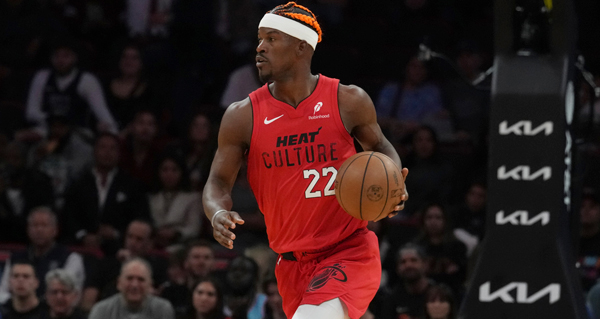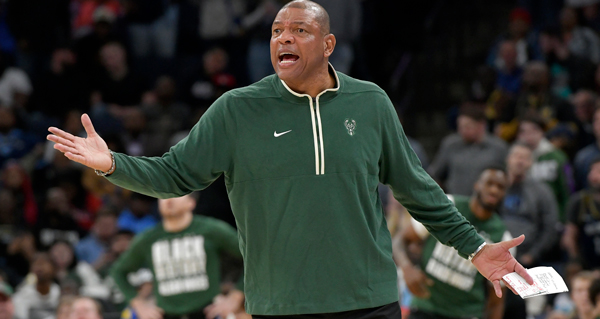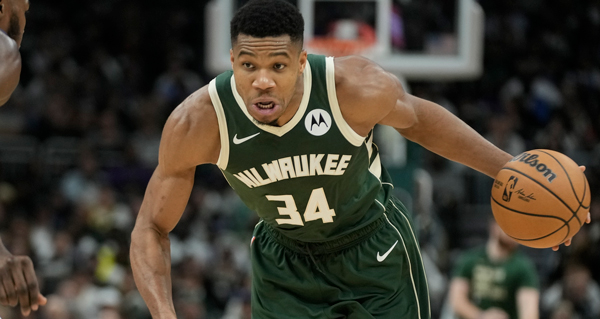If Washington D.C. is anything, it’s a monument to myth-making. Carved out of the Chesapeake’s fen and bogland in 1790, there’s no logical reason for the city to exist. It belongs to no state. There’s no broader cultural footprint—no one has a DC accent; no one hungers for DC-style cuisine. It’s a city that’s home to nearly a million people, but more, it’s a symbol of how money and power can create importance, not meaning.
All of which is to say that the Washington Wizards are bad.
Since rebranding as the Wizards in 1997, the team has won just 40.6 percent of their regular season games. A quick rundown of their most notable moments: the grim denouement of Michael Jordan’s career, a Jay-Z diss track aimed at Deshawn Stevenson, a locker room gunfight, that time John Wall did the Dougie. But even relative to the team’s previous 27 inessential editions, this year’s team might be the worst and least essential. With a 6-28 record and the league’s lowest net rating, the Wizards are expertly tanking.
As such, this Wizards’ season has assumed a freeing sense of lawlessness. Since there’s no hope or expectation of winning, the players feel no pressure to do the unglamorous things that might lead to winning. There’s nobody with the clout to push Kyle Kuzma off the ball no matter how gnarly his efficiency gets; if Jordan Poole wants to go into Jordan Poole-mode, the other 14 guys on the roster just have to make peace with it.
Even as the team’s veterans are content to fatten their stats on the largesse of irrelevance as they audition to be rescued by a midseason trade to a more serious team, the Wizards have a semi-promising crop of young players. Corey Kispert, Bub Carrington and Kyshawn George could all one day become helpful utility pieces; Bilal Coulibaly looks like he has the potential to be something more. But if this season is to have any importance beyond the mere passage of time, it’ll be because of Alex Sarr, the second pick in last year’s NBA Draft and the Wizards’ best current bet to escape the muck.
At this early point in his career, the truest testament to Sarr’s potential is the latitude that he’s given to be bad: if a lesser big man like Jericho Sims or Christian Koloko tried to copy Sarr, their coach would never speak to them again. Through his first 20 games, Sarr has arguably been the single worst offensive player in the league.
Despite being dextrous and huge, Sarr shoots just 40.8 percent from the field, putting him on pace to be one of the least-accurate seven-footers of the 21st century. When he’s on the court, the Wizards score just 104 points per 100 possessions, an almost inconceivably low number in 2024; if the rest of the league is playing chess, the Wizards are trying to jam a Parcheesi camel piece up their nose.
If the worst part of Sarr’s current game is that he misses just about every shot he takes, the most encouraging part of it is that there’s a pretty simple fix: making them. As long as you can ignore the fact that Sarr shoots like he’s trying to win a giant teddy bear at the state fair, his shot profile is largely encouraging. Like Chet Holmgren or Victor Wembanyama, Sarr is too gifted to be hemmed in by convention; over 40 percent of his shots are threes and he takes more pull-up jumpers per game than even elite stretch bigs like Karl-Anthony Towns or Brook Lopez. Similarly, his most impressive offensive moments have come when he teases the uncommon speed and coordination that could one day make him a dangerous slasher.
While Sarr’s overall stardom is still entirely hypothetical, his defense isn’t nearly as underbaked as his offensive game. In just 27.1 minutes per game, Sarr blocks 1.6 shots, the ninth most in the league. More, he contests 8.1 shots per game (third-most in the NBA), evidencing the attitude and aptitude to challenge shooters anywhere on the court. Still, he hasn’t found ways to channel his coltish overaggression into actual elite-level defense as the Wizards are still the league’s worst defense. Nonetheless, at his best, Sarr looks like the best. There’s only a handful of centers in the world who can collapse distance and spook offenses the way Sarr can—and you can usually find them on All-Defense teams.
Even if Sarr has struggled all year, he’s so gifted that even his historical unproductivity is cause for optimism: there’s a massive difference between not succeeding and being unable to succeed. Whereas another underperforming top pick like Scoot Henderson is fundamentally overwhelmed by the speed and skill of the NBA, Sarr is simply not playing well. Making just 26.5 percent of wide-open threes, he’s bricking the kind of shots that he, theoretically, should one day be able to make. In this sense, the path for Sarr to become a dangerous offensive player is one of incremental, gradual improvement. The gap between Sarr being a dreadful shooter and an above-average one is small, the equivalent of turning one or two bricks into a swish each week.
Recently, Sarr seems to have graduated to a higher level—he’s converted intriguing glimmers into good quarters into good games into good weeks. Over the last ten games, he’s averaged 15.1 points, 6.8 rebounds and 3.0 assists while shooting 45.8 percent of his three-pointers. Amid a rookie class that’s over-indexed on role-playing ham-and-eggers, Sarr offers something riskier and more exciting than the workaday competence of guys like Zach Edey or Jaylen Wells. He wants it all—the terrifying lows, the dizzying highs, the creamy middles. Goodness is the first step towards greatness.







